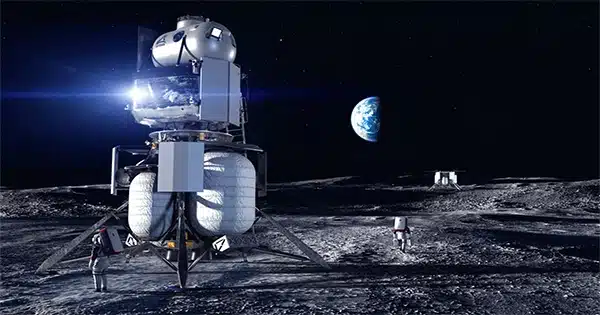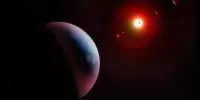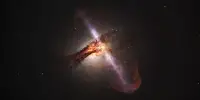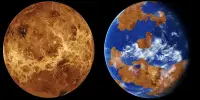Unlike the Apollo missions, which explored the Moon’s bright parts, the Artemis astronauts will land in the shadowy region of the lunar South Pole, presenting fresh hurdles for exploration.
“This will be very different from Apollo.” This isn’t just about Apollo 18. “This is a completely different approach, and the exploration strategies and scientific goals will be different,” stated Dr. Lauren Edgar, deputy principal investigator for the Artemis III geology team.
NASA recently chose a team to create a science plan for the Artemis III mission, which will be the first astronaut lunar landing in more than 50 years. Dr. Brett Denevi of the Johns Hopkins University Applied Physics Laboratory will lead a team of various specialists in identifying essential strategy and science goals for the manned mission to the Moon. The Artemis III moon landing, which is contingent on the Artemis II trip around the Moon late next year, is scheduled for late 2025.
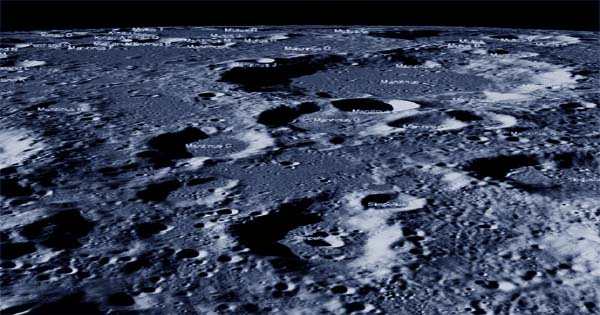
As a planetary scientist with the United States Geological Survey, Edgar has collaborated with astronauts conducting geology fieldwork on Earth as well as robotic missions such as NASA’s Mars Curiosity rover.
“We’re going to the South Pole because we’re very interested in volatiles, which vaporize easily in the presence of sunlight.” So water, things like that, and the various ices we may expect to find there,” Edgar explained. “That will tell us a lot about the evolution of volatiles in the solar system in general.”
Water ice is one of the primary reasons NASA has chosen 13 potential landing sites on the Moon’s South Pole. NASA and its international partners hope to exploit water on the Moon to produce fuel and water.
Engineering limitations may have the most major influence in determining where the Artemis III landing occurs, depending on the launch window and the necessity to land in sunlight. However, all 13 locations will provide astronauts with access to significant geological discoveries.
“Those 13 regions all have similar access to impact ejecta from a really old impact crater, which could tell us a lot about the early formation of the Moon, access to locations where you might expect to see volatiles, and anywhere we can kind of do some of the space weathering analysis that we’re interested in,” Edgar explained. “There will be differences in geology, but in general, all 13 give you some access to different parts of that.”
NASA has payloads on three private robotic flights ahead of the astronauts that will assist the geology team in determining where those volatiles are spread and what the astronauts may encounter when they arrive. The rocks discovered and gathered by astronauts on the South Pole will be unlike any samples returned from the Apollo program.
Edgar and her colleagues will attempt to develop a science game plan that will assist the astronauts in preparing to explore another planet.
“Doing geology on other planets is extremely difficult,” Edgar stated.
Astronauts will have to navigate the Moon and comprehend their location in relation to various lunar features. Because the South Pole is mostly in darkness, illumination will be difficult, according to Edgar.
“Being on the surface, they will face terrain challenges in the form of boulders, impact craters, and hazards to avoid.” You must also carry your whole life support system on your back. So going around in the costume with the tools will be difficult,” Edgar explained.
Moon simulations on Earth’s landscapes
Geology training for NASA astronauts is normally divided into three stages. Phase one begins as an astronaut candidate, and once selected, NASA astronauts travel on in-field excursions to learn the skills required for geology.
“Phase three focuses on the mission. “Once that Artemis III crew is named, and we know at least a couple of landing sites that could be options for them, you can do more specific training geared toward (those sites),” Edgar explained.
Scientists will assist the astronauts in understanding their landing region and what they may view, as well as what types of observations and samples will be required.
Once the landing locations are determined, astronauts can receive additional training on Earth using analogs that simulate the circumstances they might encounter at the lunar South Pole.
There are Moon and Mars analogs all around the world.
“Flagstaff, Arizona, where the US Geological Survey is, is a great spot for training, and also the reason why our center exists in Flagstaff is for training the Apollo astronauts back in the sixties,” Edgar explained.
According to Edgar, analog astronauts train for Mars missions on Hawaii’s Kilauea volcano, and Iceland is another common analog for the Moon and Mars.
The ultimate goal of NASA is to create a permanent presence on the Moon and, eventually, Mars. According to Edgar, in-situ resource use, or the use of planetary resources, will aid future Mars exploration initiatives.
“All of the technology required to get there, the exploration strategies, are kind of that concept of operations and procedures that we can test out the infrastructure required to support humans and in-situ resource utilization.” What can we utilize there that we don’t have to bring?” Edgar stated. “Those are all things that will eventually help us bring humans to Mars.”
